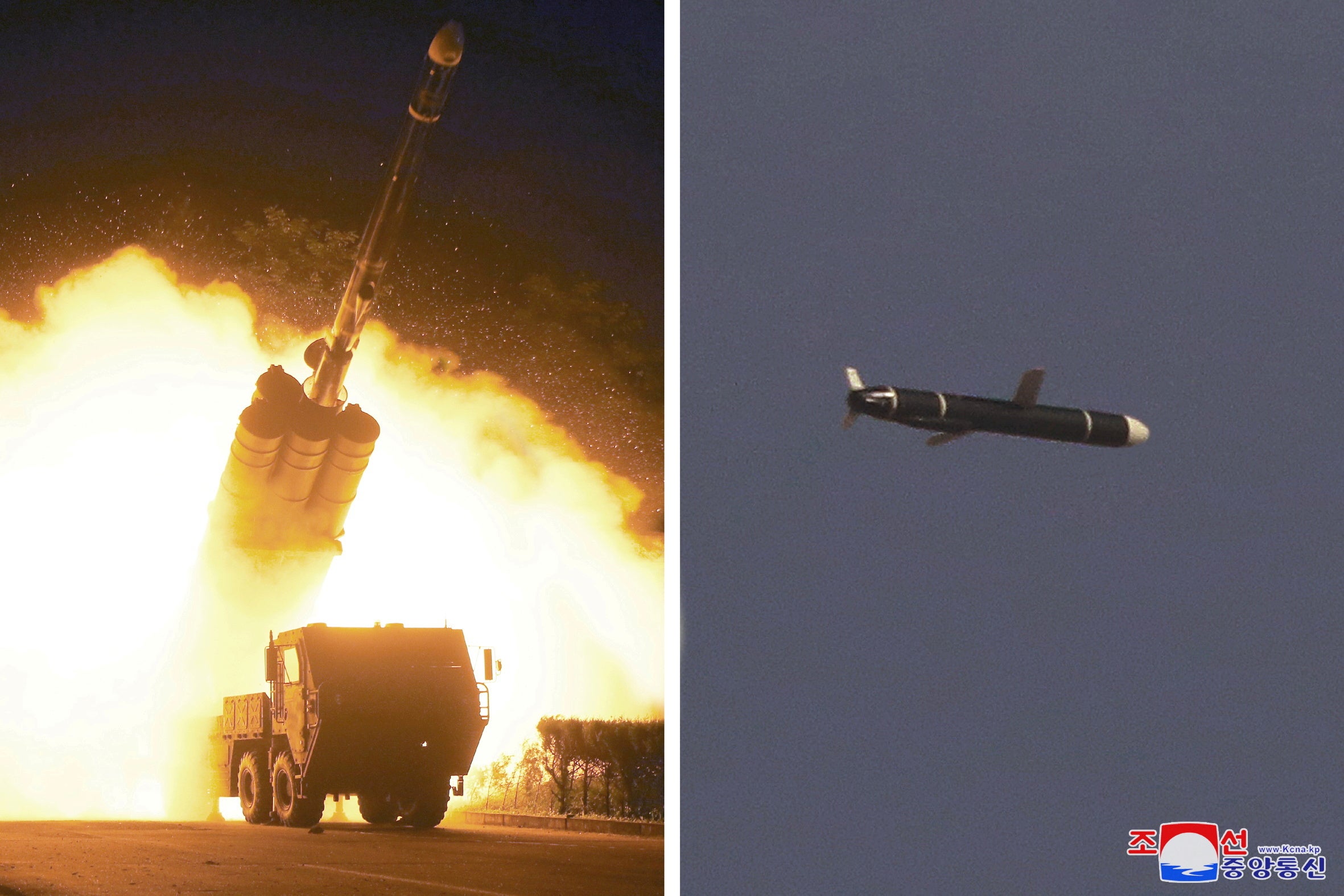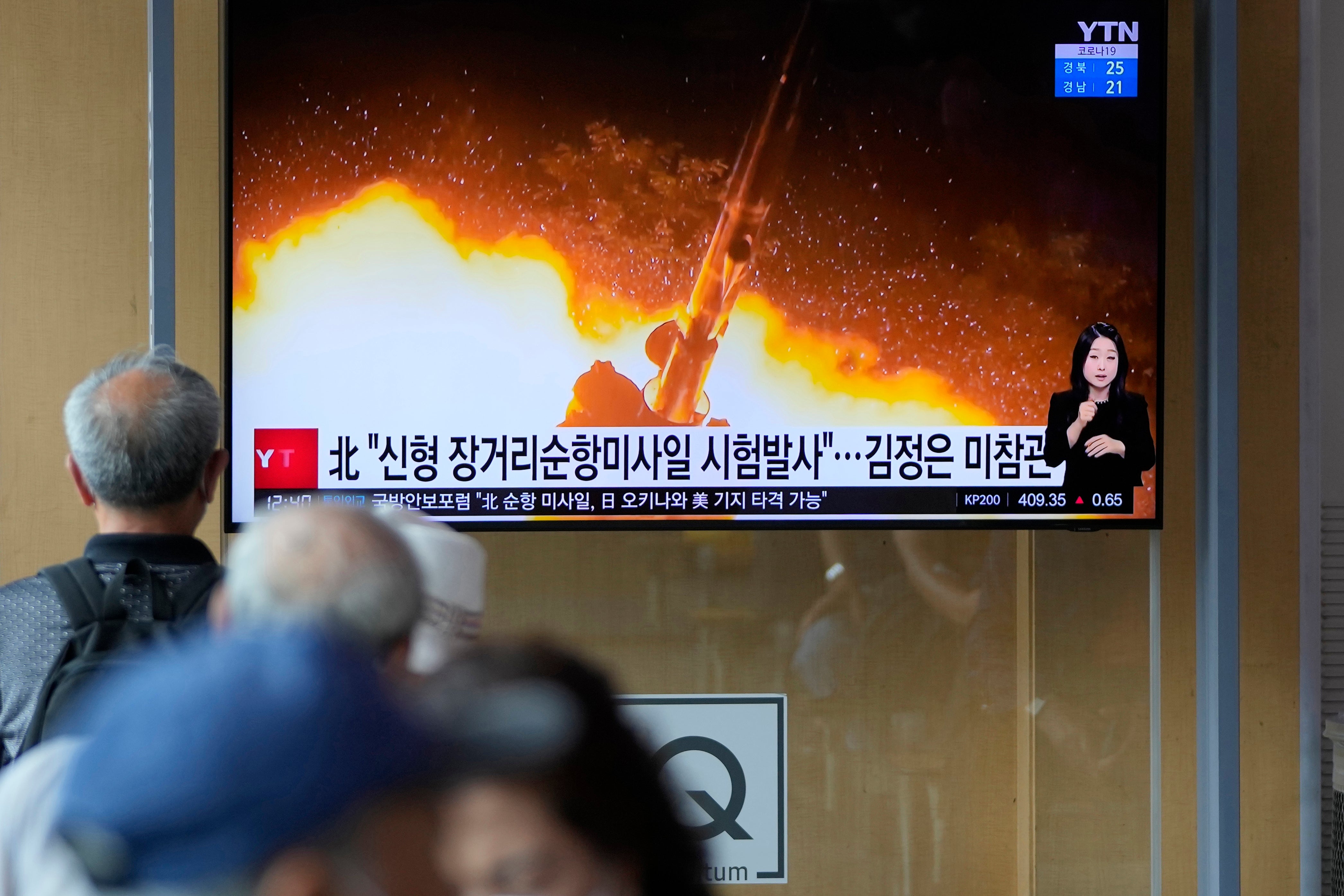North Korea missile test: International alarm as Pyonyang fires first cruise missile ‘with nuclear potential’
Analysts say term ‘strategic’ is a common euphemism for nuclear-capable weapons systems

Your support helps us to tell the story
From reproductive rights to climate change to Big Tech, The Independent is on the ground when the story is developing. Whether it's investigating the financials of Elon Musk's pro-Trump PAC or producing our latest documentary, 'The A Word', which shines a light on the American women fighting for reproductive rights, we know how important it is to parse out the facts from the messaging.
At such a critical moment in US history, we need reporters on the ground. Your donation allows us to keep sending journalists to speak to both sides of the story.
The Independent is trusted by Americans across the entire political spectrum. And unlike many other quality news outlets, we choose not to lock Americans out of our reporting and analysis with paywalls. We believe quality journalism should be available to everyone, paid for by those who can afford it.
Your support makes all the difference.North Korea said on Monday it had successfully launched its first “strategic” long range cruise missile as part of a series of tests, stoking international concern over what analysts say is likely to be a weapon with nuclear potential.
In the tests staged over the weekend, the North Korean missiles travelled and hit targets at a distance of 1,500km (930 miles), according to the state-run Korean Central News Agency (KNCA) – a range that would make it capable of hitting much of Japan.
The US military expressed concerns over the missile tests, saying they posed “threats” to the country’s neighbours and beyond.
“This activity highlights DPRK’s continuing focus on developing its military programme and the threats that poses to its neighbours and the international community,” the US Indo-Pacific Command said in a statement, referring to the North’s official name, Democratic People’s Republic of Korea.
Japan said it was “extremely concerned” following the tests. Katsunobu Kato, Japan’s chief cabinet secretary, said North Korean missiles of such range would pose a “serious threat to the peace and safety of Japan and its surrounding areas”.
He said Tokyo was working closely with Washington and Seoul to gather information on North Korea’s latest tests, but said there was no immediate indication that the weapons entered Japan’s exclusive economic zone.
The North Korean state media reports said the missiles were fired following two years of research, that they changed their trajectories and flew in “pattern-8 flight orbit” for two hours before hitting the target and falling into the North’s territorial waters.
North Korea hailed the cruise missiles’ “strategic significance”, boasting that the country now “possess[es] another effective deterrence means for more reliably guaranteeing the security of our state and strongly containing the military manoeuvres of the hostile forces”.
North Korea is banned from developing and testing ballistic missiles by a series of resolutions from the United Nations Security Council. The cruise missile tests are allowed but remain a matter of concern among observers as the North continues to expand its military capabilities amid prolonged deadlock in nuclear talks with the United States.
This was North Korea’s first missile test since March, when it launched a new tactical short-range ballistic missile.

South Korea’s military said that they were conducting a detailed analysis of the North Korean launches based on intelligence inputs from both South Korea and Japan.
Calling the tests “provocative”, Leif-Eric Easley, associate professor of international studies at Ewha Womans University in Seoul, said North Korea calling it a “strategic” weapon implies an intention to fit a miniaturised nuclear warhead on it.
“If that is the case, then the test is deserving of an international effort to strengthen sanctions. However, Pyongyang may be calculating that Washington will take a weaker approach, given strained US relations with China and Russia and those countries’ general opposition to increasing sanctions,” Prof Easley said.
The test launch came ahead of US president Joe Biden’s nuclear envoy Sung Kim’s scheduled visit to Tokyo to meet his Japanese and South Korean counterparts this week.
Prof Easley said the meeting was to focus on creative ways of diplomatically engaging Pyongyang. “But now a trilateral statement is needed that mentions sanctions and defence co-operation while calling on North Korea to practise military restraint, resume dialogue, and accept humanitarian assistance for alleviating the suffering of its people,” he added.
Ankit Panda, an international security expert and author of a book on Kim Jong-un’s nuclear capabilities, said: “This would be the first cruise missile in North Korea to be explicitly designated a ‘strategic’ role... a common euphemism for a nuclear-capable system.”
The missile test followed a military parade that was attended by Mr Kim last week to celebrate the 73rd anniversary of the country’s foundation. It was seen at the time by analysts as a significantly less assertive display by a nation which often uses such parades to show off its military power.
Mr Kim did not attend the latest test launch but it was staged in the presence of his close aide Pak Jong Chon, according to state media reports.
In January, during a congress of the ruling Workers’ Party, Mr Kim doubled down on his pledge to bolster his nuclear deterrent in the face of US sanctions. He boasted of new sophisticated assets, including longer-range intercontinental ballistic missiles, nuclear-powered submarines, spy satellites and tactical nuclear weapons.
Mr Kim also said then that his national defence scientists were developing “intermediate-range cruise missiles with the most powerful warheads in the world”.
Join our commenting forum
Join thought-provoking conversations, follow other Independent readers and see their replies
Comments